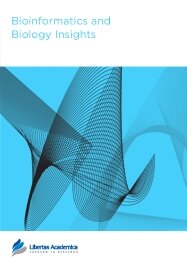

Publication Date: 17 Apr 2011
Type: Original Research
Journal: Bioinformatics and Biology Insights
Citation: Bioinformatics and Biology Insights 2011:5 59-82
doi: 10.4137/BBI.S6206

Phytoremediation refers to the use of plants for extraction and detoxification of pollutants, providing a new and powerful weapon against a polluted environment. In some plants, such as Thlaspi spp, heavy metal ATPases are involved in overall metal ion homeostasis and hyperaccumulation. P1B-ATPases pump a wide range of cations, especially heavy metals, across membranes against their electrochemical gradients. Determination of the protein characteristics of P1B-ATPases in hyperaccumulator plants provides a new opportuntity for engineering of phytoremediating plants. In this study, using diverse weighting and modeling approaches, 2644 protein characteristics of primary, secondary, and tertiary structures of P1B-ATPases in hyperaccumulator and nonhyperaccumulator plants were extracted and compared to identify differences between proteins in hyperaccumulator and nonhyperaccumulator pumps. Although the protein characteristics were variable in their weighting, tree and rule induction models; glycine count, frequency of glutamine-valine, and valine-phenylalanine count were the most important attributes highlighted by 10, five, and four models, respectively. In addition, a precise model was built to discriminate P1B-ATPases in different organisms based on their structural protein features. Moreover, reliable models for prediction of the hyperaccumulating activity of unknown P1B-ATPase pumps were developed. Uncovering important structural features of hyperaccumulator pumps in this study has provided the knowledge required for future modification and engineering of these pumps by techniques such as site-directed mutagenesis.
PDF (632.59 KB PDF FORMAT)
RIS citation (ENDNOTE, REFERENCE MANAGER, PROCITE, REFWORKS)
BibTex citation (BIBDESK, LATEX)
XML
PMC HTML
Bioinformatics and Biology Insights fills a gap in current journals. Ever more often, bioinformatics and detailed analysis of data creates novel, unexpected insights. It is good to have a journal which focusses on exactly this aspect of bioinformatics research, putting the biology insights upfront with high respect for the different methods in bioinformatics.

All authors are surveyed after their articles are published. Authors are asked to rate their experience in a variety of areas, and their responses help us to monitor our performance. Presented here are their responses in some key areas. No 'poor' or 'very poor' responses were received; these are represented in the 'other' category.See Our Results
Copyright © 2013 Libertas Academica Ltd (except open access articles and accompanying metadata and supplementary files.)
Facebook Google+ Twitter
Pinterest Tumblr YouTube